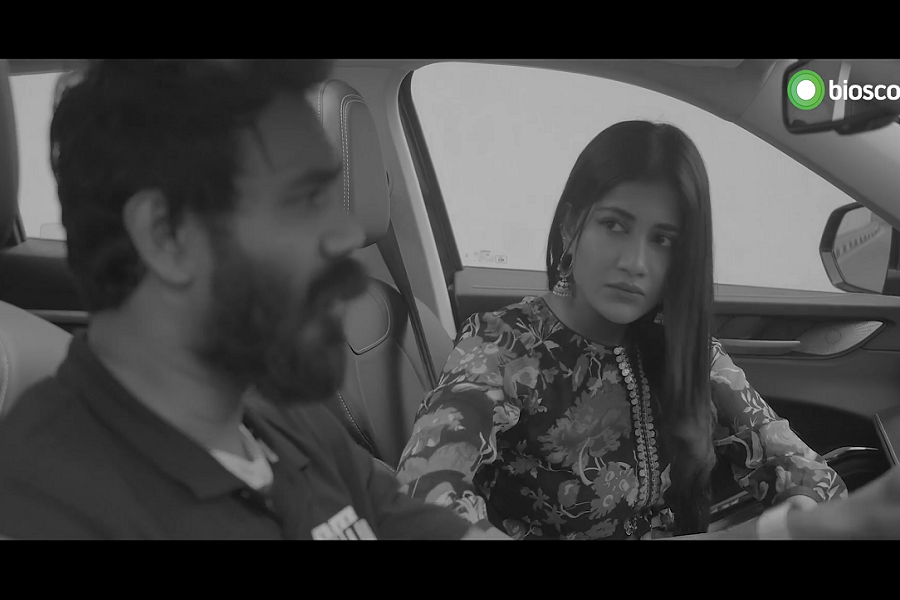Ever heard of the butterfly effect? Well, the term refers to an idea that, something small, be it a mundane act or a decision, or anything else, can lead to some kind of large-scale consequences.
The recently released short film Bhrom can be interpreted from the basis of this butterfly effect. It will remind the viewers that maybe the smallest of things can be the architect of the most unanticipated consequences.
The story of Bhrom starts with a quite normal vibe, and gets twisted as the short advances.
Foysal and Sanu, a married couple who are going to be divorced within the upcoming days, fix a meet up to spend some quality time with each other for the last time.
The short starts on that certain day; Foysal walks out of his house, drops his phone, picks it up, then enters his car. A mentally imbalanced fellow knocks the car-glass, wants to know the time in sign language.
Foysal tells him the time, starts the car, and picks Sanu from a specific place. They have a bitter conversation and Sanu gets out of the car.
This same story repeats again and again, just like a magical time loop, and every time Foysal somehow gets the same consequence as before, except in one twisted case.
To understand the presence of butterfly effect here, rewind the first part. Foysal here is a raw Foysal, the one Sanu wants to get divorced. He plays songs on high volume while driving, he keeps an open coffee cup beside the gear of his car unconsciously, he overlooks Sanu’s headache, does not interact with her properly, and shows arrogance with a cold voice.
Now, the second part, when the same series of events happens, but a bit differently. This time, he does not leave the coffee cup open, even does a better interaction than the previous time.
And these tiny changes result in a decrease in the bitterness of their conversation a lot. Even Sanu, unlike the previous time, seems to be a lot easier. Yet, at one point, they fight and Sanu gets out of the car.
The third part changes Foysal more. He can now sense that something strange is happening, he is in a loop, and tries to break it.
This time Foysal does not give the mental patient a chance to interact. He plays no song, he talks to Sanu in a much warmer voice, even insists her to stay. Again, the result is the same.
In the last part, the story starts like the previous ones, but as soon as it starts, Sanu is seen dead on the backseat of Foysal’s car, and the divorce paper lying on the front seat.
Now, why did Foysal see the same thing in various ways for three consecutive times? Well, maybe the first three parts were dream reality, and only the last part was real.
Maybe, in the physical world, Sanu died (leaving him) because of Foysal’s arrogant behaviour. And somehow, Foysal could realise what wrong things he has done to her. That is why, maybe, he was trying to correct his behaviour step by step in his layered dreams.
Still, one mystery remains unsolved. How did Sanu’s dead body come to Foysal’s car’s backseat? Well, maybe this can be answered through magic realism.
To tell about the term, magic realism is basically the mixture of magic and reality. Here, a story is told in a reality that is affected by magic, so that the viewers can reach an abstract understanding of that particular work.
Mir Rabby, Samia Othoi and Muntaquem Al Mahian played the lead roles in Brom. This thought-provoking short film is directed by Faez Ahmed and is now streaming on Bioscope.


